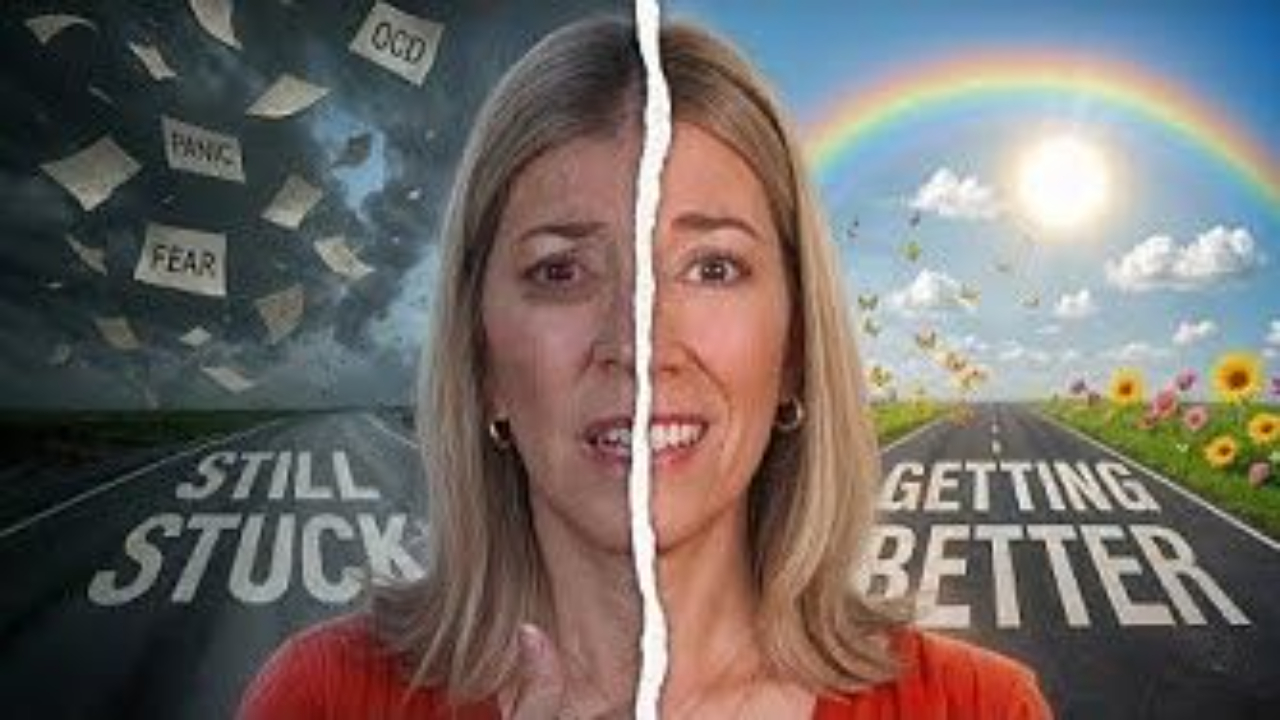
Overcoming Fear and Anxiety: Conquering the Beast Within
Fear can be a powerful force that holds us back from living our lives to the fullest. Whether it's a fear of heights, anxiety, panic disorder, health anxiety, or other phobias, it can become all-consuming if left unchallenged. In this blog post, we will explore the concept of fear, how it can control our lives, and most importantly, how to overcome it.
Breaking the Cycle of Fear:
The good news is that there are effective treatments available to help break the cycle of avoidance and anxiety. One such treatment is Exposure and Response Prevention (ERP) therapy, a form of cognitive-behavioral therapy. ERP therapy gradually exposes individuals to their feared situations in a safe and controlled environment. Anxiety and phobias can be debilitating, affecting the quality of life for those who experience them. Fortunately, there are effective treatments available that can help individuals regain control and lead fulfilling lives.
The Path to Overcoming Fear:
Overcoming fear is a journey that requires patience, consistency, and determination. It's essential to understand that the goal is not to eliminate anxiety entirely – anxiety is a natural part of life. Instead, the goal is to increase your ability to tolerate anxiety while your brain learns that you are safe. As you practice facing your fears, the anxiety will naturally diminish over time.
Facing Your Fear:
To overcome any fear or phobia, it's crucial to identify its core and challenge it daily. Instead of avoiding situations that make you anxious, gradually expose yourself to them. Let go of safety rituals and compulsions. Allow fear and anxiety to be present, and understand that the symptoms are not harmful or dangerous. Fear can control our lives, limiting our potential and causing distress. However, with the right tools and mindset, fear can be conquered. Exposure, patience, and resilience are key in facing anxiety and phobias. Remember, the goal is not to eliminate anxiety entirely but to increase your ability to tolerate it while living your life to the fullest. So, let yourself fall backward off that metaphorical cliff, and watch as your fears diminish over time.

Nothing is worse than feeling unsafe in your body, like you are a victim of your fear and not in control. You have come to the right place. Learn how to take back your freedom from high anxiety, bodily sensations and panic.
Understanding Exposure Therapy:
Exposure therapy is a well-established and evidence-based approach used to treat various anxiety disorders, including generalized anxiety disorder, social anxiety disorder, specific phobias, post-traumatic stress disorder (PTSD), and obsessive-compulsive disorder (OCD). The core principle of exposure therapy is to confront the feared object or situation gradually and repeatedly, allowing the individual to reduce their anxiety response over time.
How Exposure Therapy Works:
-
Assessment: A trained therapist assesses the individual's specific anxiety triggers and symptoms to develop a tailored treatment plan.
-
Exposure Hierarchy: The therapist and individual create an exposure hierarchy, a list of situations or stimuli related to the fear, ranked from least to most anxiety-provoking.
-
Exposure: The individual is exposed to the feared situations or stimuli in a controlled and safe environment. This exposure can be either imaginal (thinking about the feared situation) or in vivo (real-life exposure).
-
Response Prevention: During exposure, individuals are discouraged from engaging in avoidance behaviors or safety rituals, which are common coping mechanisms for anxiety.
-
Gradual Progression: Exposure sessions progress from lower anxiety items to higher ones, allowing individuals to build confidence and tolerance over time.
Benefits of Exposure Therapy:
-
Reduction in Anxiety: Exposure therapy helps individuals reduce their anxiety responses to feared situations or stimuli.
-
Improved Coping: By confronting their fears, individuals learn healthier ways to cope with anxiety and distress.
-
Lasting Results: Exposure therapy has been shown to produce long-lasting effects, reducing the likelihood of relapse.
-
Increased Quality of Life: Overcoming anxiety and phobias allows individuals to regain control over their lives, leading to improved overall well-being.
Real-Life Application: Exposure therapy can be applied to various situations, such as overcoming the fear of flying, heights, public speaking, or social interactions. It can also be beneficial for individuals struggling with OCD, where exposure to obsessions helps reduce compulsive behaviors.
Fear can control our lives, limiting our potential and causing distress. However, with the right tools and mindset, fear can be conquered. Exposure, patience, and resilience are key in facing anxiety and phobias. Remember, the goal is not to eliminate anxiety entirely but to increase your ability to tolerate it while living your life to the fullest. So, let yourself fall backward off that metaphorical cliff, and watch as your fears diminish over time. Exposure therapy is a powerful tool for overcoming anxiety and phobias, offering individuals a path to regain control and improve their quality of life. If you or someone you know is struggling with anxiety-related issues, consider seeking the guidance of a trained therapist who can provide a personalized exposure therapy plan. Remember, confronting your fears is the first step towards a brighter, anxiety-free future.
Let's Keep in Touch
Subscribe to My Newsletter
We hate SPAM. We will never sell your information, for any reason.







